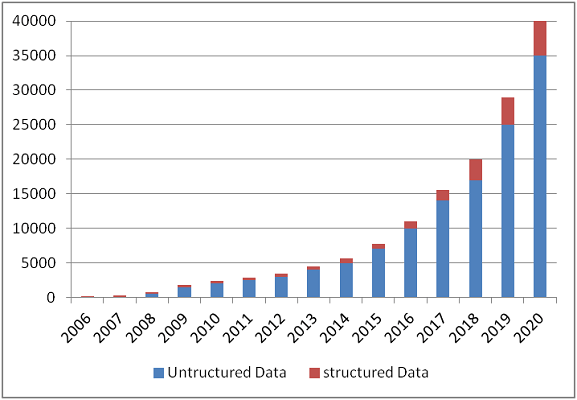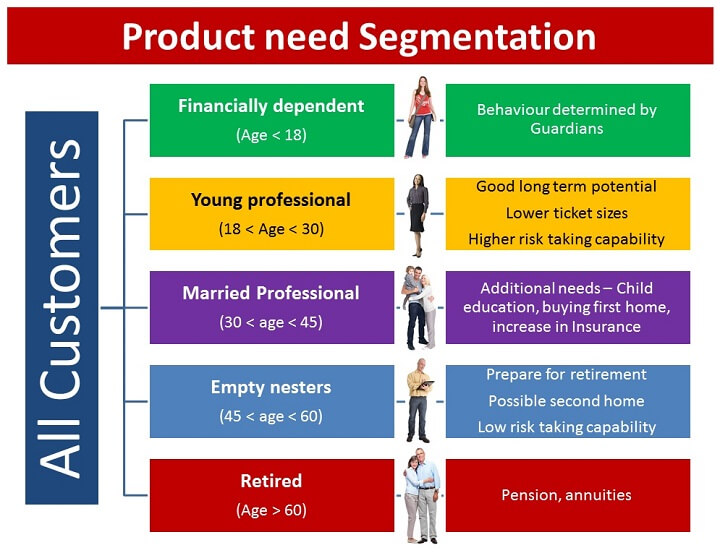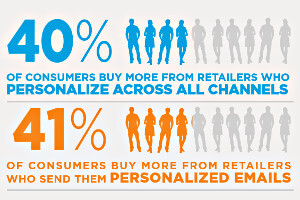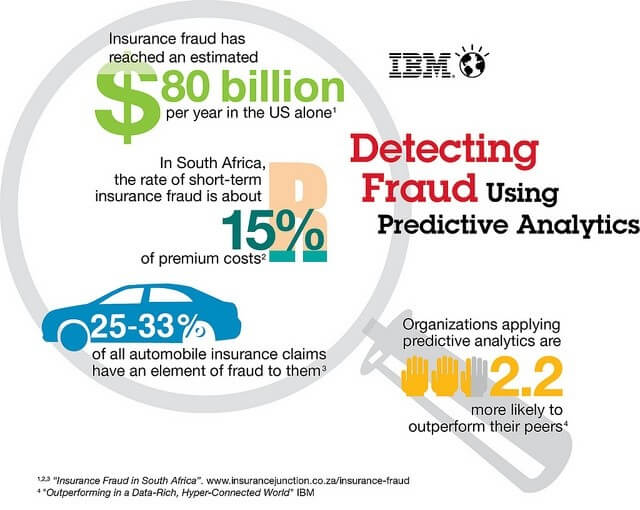According to TopPOSsystem, over 90% companies believe that Big Data will make an impact to revolutionize their business before the end of this decade. These Big Data use cases in banking and financial services will give you an insight into how big data can make an impact in banking and financial sector.
In every industry and sector, you will find people talking about data and just data. Data warehouses are getting migrated to big Data Hadoop system using Sqoop and then getting analyzed.
According to research done by SINTEF, 90% of data have been generated just in last two years.
 As you can see from the above figure that how a sudden growth happened in the data generation. Also, most of the generated data is unstructured, and so you need machine learning technologies like R and Python or even have to write UDFs to make it structured and process further using Hadoop ecosystems.
As you can see from the above figure that how a sudden growth happened in the data generation. Also, most of the generated data is unstructured, and so you need machine learning technologies like R and Python or even have to write UDFs to make it structured and process further using Hadoop ecosystems.
Every sector has loads of data and all companies need to do is analyze those data for some fruitful result. Especially when we talk about Banking and Financial sector, there is a lot of scope for big data, and they have started taking benefits of it.
In this blog post, I am going to share some Big Data use cases in banking and financial services. If these sectors can use Big Data and related technologies in these niches, then they may expect some good result and better customer valuation.
Here are some of the common problems banking sector is facing despite having huge data in hand.
 5 Top Big Data Use Cases in Banking and Financial Services
5 Top Big Data Use Cases in Banking and Financial Services
In fact, in every area of banking & financial sector, Big Data can be used but here are the top 5 areas where it can be used way well. Follow these Big Data use cases in banking and financial services and try to solve the problem or enhance the mechanism for these sectors.
These can even help in personal finance as well on high-scale like banking system applications. If you’re looking at small scale, you may use the personal finance calculator and calculate and plan your personal finance better.
1. Customer Segmentation
Segmentation is categorizing the customers based on their behavior. This helps in targeting the customer in a better way.
Banks are moving now from the label of product centric to customer centric and so targeting individual customer is at most necessary.
Big data analysis is helping them to know about the details like demographic details, transaction details, personal behavior, etc. Based on these data, banks can make a separate list for such customer and can target them based on their interest and behavior.
Here is a simple customer segmentation analysis-
 2. Personalized Marketing
2. Personalized Marketing
Personalized marketing is nothing but the next step of highly successful segment-based marketing where we divide the customers into a different segment based on some parameters and then follow with them accordingly to convert to sales.
 In personalized marketing, we target individual customer based on their buying habits. Industries can take help of the data from e-commerce profiles like what they are buying, what they are browsing etc. to get the data of individual customers. These data will unstructured and so use Big Data technologies; it can be converted into structured and can be analyzed further.
In personalized marketing, we target individual customer based on their buying habits. Industries can take help of the data from e-commerce profiles like what they are buying, what they are browsing etc. to get the data of individual customers. These data will unstructured and so use Big Data technologies; it can be converted into structured and can be analyzed further.
Companies can also take data from customers’ social media profile and can do sentiment data analysis to know the habit and interest.
Further risk assessment can be done to decide whether to go ahead with the transaction or not.
3. Risk Management Analysis
While every business involves risks but a risk assessment can be done to know the customer in a better way. Risk management analysis is one of the key areas where banking sector can save themselves from any kind of fraud and unrecoverable risk.
For this, the best thing is to take help of Big Data technologies like Hadoop. Gather the previous record of the customer like loan data, credit card history or their background data and analyze whether they can pay the kind of service they are looking for.
Here is the current risk assessment graph of various major banks-
 The risks of algorithmic trading are managed through back testing strategies against historical data. Big data analysis can also support real-time alerting if a risk threshold is surpassed.
The risks of algorithmic trading are managed through back testing strategies against historical data. Big data analysis can also support real-time alerting if a risk threshold is surpassed.
4. Fraud Detection
Recently millions of customers’ credit/debit card fraud had in the news. Several users also found fraud activity from their account. This could have been reduced with the help of big data and machine learning. The below graphic by IBM shows how fraud can be detected with predictive analysis.
 Based on the machine learning analysis, banks can come to know about the normal activities and transactions a customer does. And whenever they find any unusual behavior, they can immediately blacklist their card or account and inform the customer.
Based on the machine learning analysis, banks can come to know about the normal activities and transactions a customer does. And whenever they find any unusual behavior, they can immediately blacklist their card or account and inform the customer.
5. Compliance Requirements
Banking and financial services need to do regular compliance and audit for their data, finance, and other stuff.
They come under regulatory body which requires data privacy, security, etc. Big data analysis can again help in analyzing the data and finding the situation where financial crisis or security issue can occur. This will help the banks and financial sector to save from any compliance and regulatory issues.
Conclusion
Banks have already started using Big Data to analyze the market and customer behavior but still a lot of need to be done.
From all customer, business and compliance point of view, such analysis is at most required. Big data service provider companies have a great chance to grab this market and take it to the next level. A lot of improvements can be needed in Merchant Account Solutions, credit card segment such as wireless credit card reader, best credit card swiper, etc.to make it secure and handy for the users.
I hope you liked these Big Data use cases for banking and financial services. Do add if you find any other segment where big data can be used in broad scale.




Great job, I love this topic & especially the way you have explained it is really awesome.